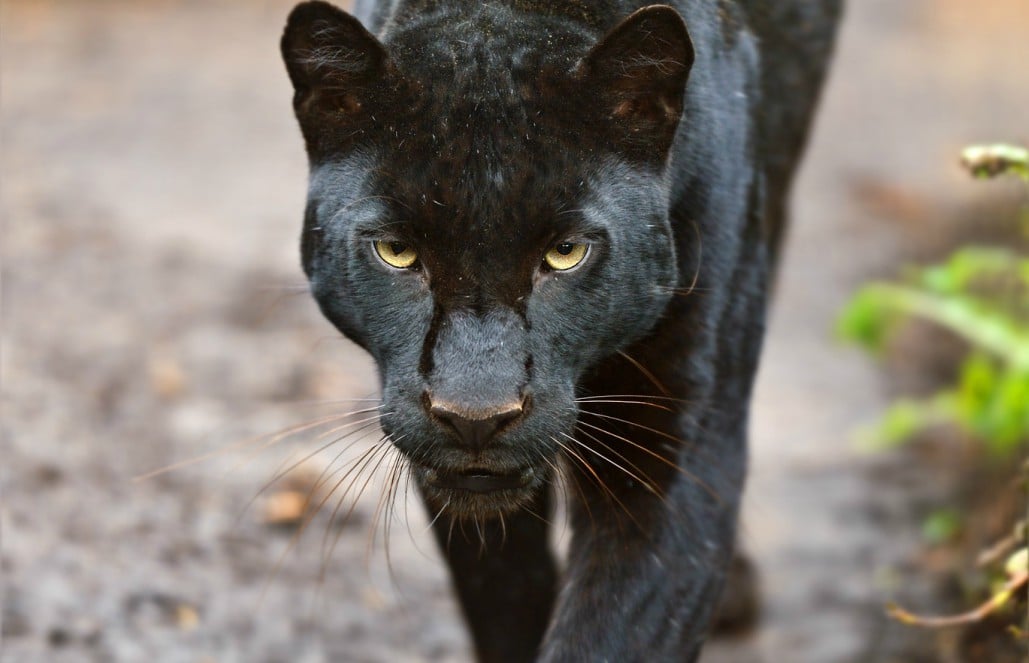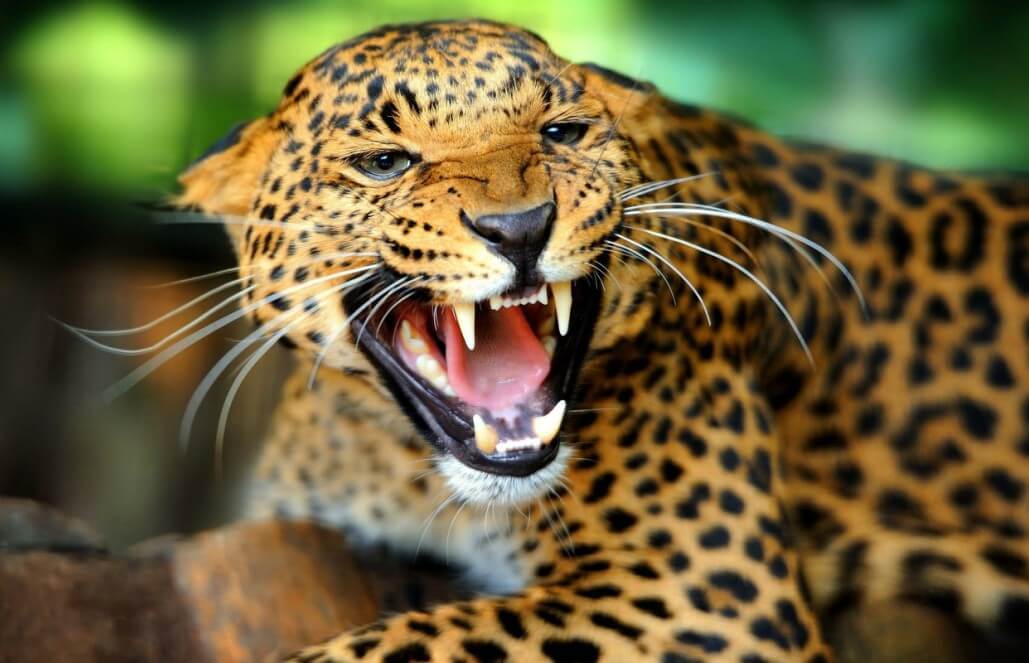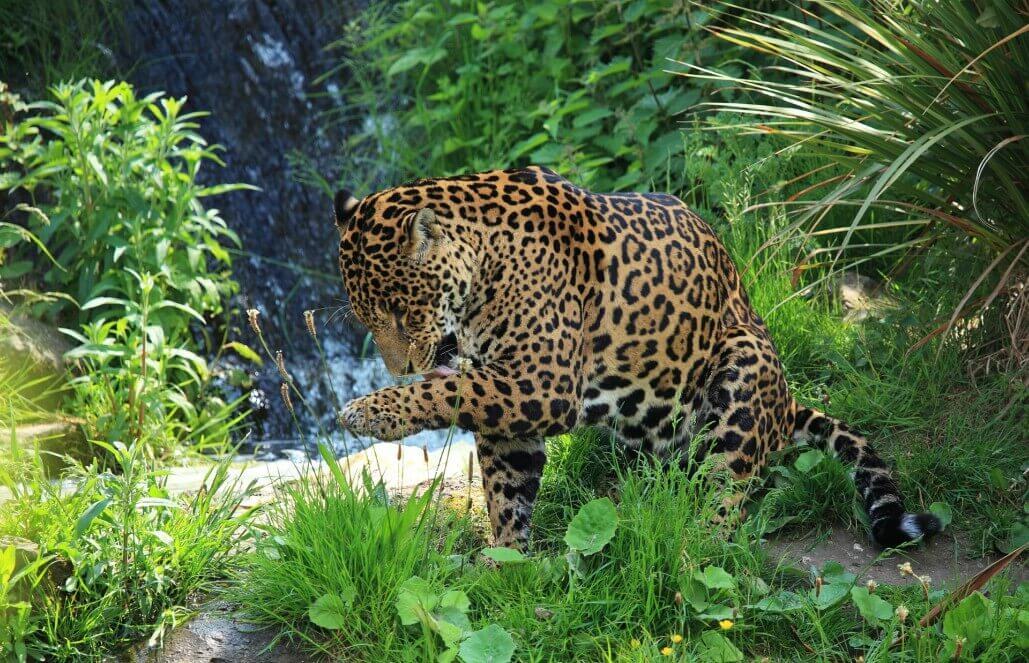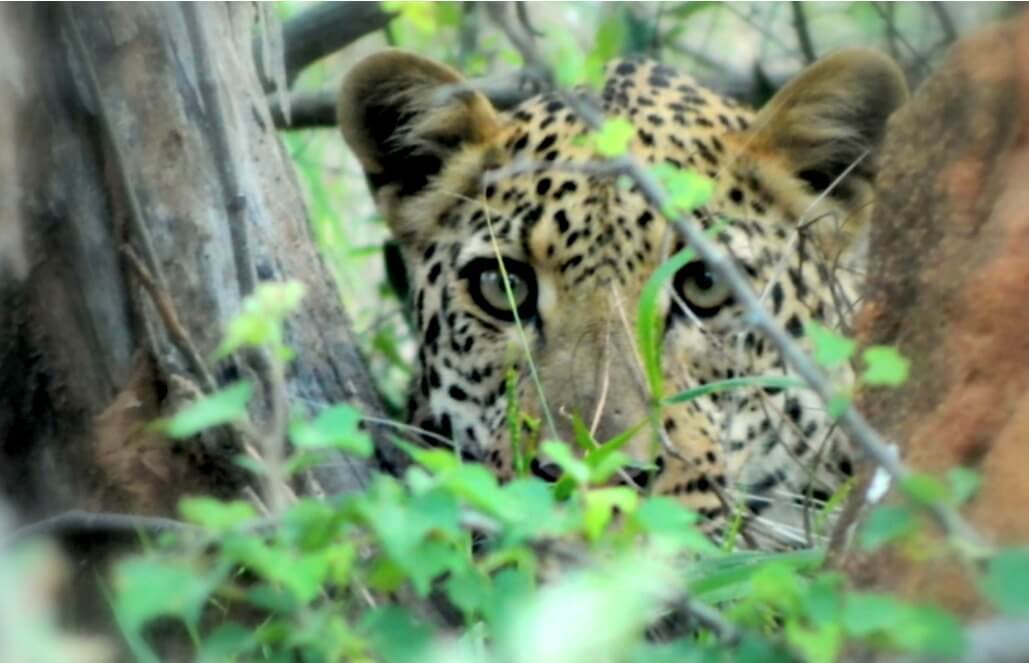Costa Rica’s jaguars are both mighty and mysterious. What we know about these unique big cats is fascinating. What we don’t know might be even more intriguing. GoEco’s Jaguar Research and Conservation program aims to uncover this big cat’s secrets – there is still a lot to learn.
Check out these 7 amazing jaguar facts:
1. Jaguars Love To Swim – And Fish
Unlike most other big cats, jaguars love the water. They can swim impressive distances and have been known to cross the Panama Canal. They also play, bathe, and hunt in and around rivers, pouncing on fish in pools and streams. In fact, legend has it that jaguars love fishing so much that they sometimes dangle the tip of their tail in the water, using it like a fishing line to lure in their aquatic prey.
2. Jaguars Are Famous For Their One Strike Hunting Style
The name ‘jaguar’ comes from yaguar, a Native American word meaning “he who kills with one leap.” For centuries, jaguars have instilled fear and respect in people due to their powerful hunting tactics. The cats are efficient climbers and happily scale trees before pouncing down on their prey and killing with one skull-crushing bite. The jaguar’s size, along with its powerful teeth, jaws, and claws mean they are efficient hunters who will eat anything from crocodiles to snakes and monkeys. Their hunting style is distinct, as while most other big cats go for the throat when going in for the kill, jaguars will use their mighty jaws to clamp down on their prey’s skull.
3. Jaguars Are The Third Biggest Cat In The World
The jaguar’s size is impressive. They are the largest big cat after the tiger and lion, and are the biggest cat in the Americas. Male jaguars can measure up to two meters from their nose to the tip of their tail and weigh up to 95 kilograms. They also stand as high as 76 centimetres at the shoulder. However, their tail is the shortest out of all the big cats, as their sturdy frames are built more for climbing than speed.
4. Black Panthers Are Actually Black Jaguars
All-black jaguars are more commonly known as panthers. The black coat is caused by a melanistic gene which can also appear in leopards. The great black cats thrive deep in the rainforest, where their dark coast help them blend in with the shadows. Black jaguars are a rare and truly spectacular sight. Only around six percent of jaguars in South America are born with a black coat.
5. Jaguars Are Classified As Near Threatened
Once upon a time, jaguars roamed from the southern tip of South America all the way up to the border between the United States and Mexico. Now, these big cats are found only in pockets of rainforest in remote parts of South and Central America. Jaguar populations in the Americas have dropped from 400,000 to 14,000 over the past century. Today, the jaguar numbers are highest in the Amazon, but they also thrive in the swamp lands and tropical forests in Costa Rica. Thanks to the large number of protected areas in Costa Rica, jaguars are able to hide and roam as necessary.
However, poaching and rainforest destruction remain the biggest threats to jaguars today. Their numbers are on the decline and more measures need to be taken to protect these magnificent animals to ensure their conservation status doesn’t dip to endangered.
6. Jaguars Can Roar
If you see a jaguar in the wild, you can count yourself lucky. These elusive cats are hard to spot. There is a better chance of hearing them speaking. Like all of the other big cats, the jaguar can roar. Their roar isn’t as famous as a lion’s though, as it sounds more like a repetitive cough. Jaguars are more likely to raise their voices when warning others off their territory. The cats are notoriously solitary and often don’t tolerate other jaguars in the areas they roam, which can stretch up to 40 square kilometers.
7. The Mayans Believed The Jaguar Was The Ruler Of The Underworld
Thanks to their striking beauty, power, and former distribution across the Americas, jaguars feature prominently in indigenous cultures and beliefs. The Mayans revered the jaguar. Because the animal is at home during the nighttime, they believed it ruled the underworld. Many sculptures, pottery pieces, and other artifacts depict gods with features that resemble jaguars. Jaguars were held in such high regard that only the ruling class were permitted to don the spectacular pelts. In this way, jaguar pelts became a symbol of authority.
Interested In Jaguar Rescue?
If you would like to protect Costa Rica’s jaguars, you can volunteer to carry out research and conservation in Tortuguero National Park. As a volunteer, you’ll help with surveys of the national park, looking for signs of jaguar activity and setting up cameras in remote areas. Their elusiveness makes Costa Rica’s jaguars difficult to study, so there is still a lot of research that needs to be carried out in order to understand them better.
While studying the jaguars, you’ll learn all about the fascinating ecosystems in Costa Rica’s rainforests. This is the ideal program for anyone interested in getting involved in wildlife conservation, exploring more of Costa Rica’s wilderness, and gaining volunteer experience while visiting one of the most beautiful countries in the world.
Enroll in GoEco’s Jaguar Research and Conservation program, or browse more volunteering opportunities in Costa Rica.














